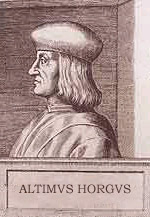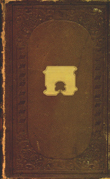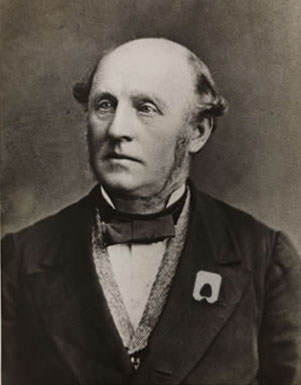 Although occlupanids were known throughout civilized history as a common polymer parasite, the formal study of occlupanology is thought to have begun in Florence, Italy, in the late 1600s by the great polymath Altimizia Horgia, better known by his Latinized name Altimus Horg. As a young boy in Bassiano, Altimus collected with care the horn and tortise-shell occlupanids that would litter the cobble-stone streets.
Although occlupanids were known throughout civilized history as a common polymer parasite, the formal study of occlupanology is thought to have begun in Florence, Italy, in the late 1600s by the great polymath Altimizia Horgia, better known by his Latinized name Altimus Horg. As a young boy in Bassiano, Altimus collected with care the horn and tortise-shell occlupanids that would litter the cobble-stone streets.  An accomplished merchant and tireless publisher of obscure journals of his own creation, Altimus is credited with the first description of occlupanids as a species, the first description of occlupanids in a text, in fact the first mention of occlupanids at all in western literature. He is also the first to devise a system of classification of the occlupanids he found.
An accomplished merchant and tireless publisher of obscure journals of his own creation, Altimus is credited with the first description of occlupanids as a species, the first description of occlupanids in a text, in fact the first mention of occlupanids at all in western literature. He is also the first to devise a system of classification of the occlupanids he found.
Altimus founded the Holotypic Occlupanid Research Group in 1632 in order to share knowledge of occlupanids with other researchers in Europe. Sadly, his grand announcement came a day after news that Galileo Galilei was to be sent to the Inquisition, and the public display of Horg’s collections to be held later that week at his estate in Florence went unnoticed by a skittish scientific community. Undeterred, Altimus Horg continued to publish treatises, papers, and leaflets of all sorts on the subject of occlupanids. His collection of occlupanids, through impressive, was “far from complete” at the time of his death in 1679.
The study of occlupanology was not to be undertaken by the scientific community until two hundred years later, in the London borough of Hackney. There, a mysterious package arrived from Italy for a young man by the name of Horatio Horg, who was thought to be working for famed inventor Alexander Parkes at the time.
Young Horg had no knowledge of his Italian heritage. His grand-parents had emigrated to England during the Napoleonic invasion of Italy, and had taken very little with them. The archive of occlupanids, carefully collected and collated by his ancestor, ignited a passion for science in the young man, and he took to the streets of London, eagerly seeking out all the occlupanids that had sprung up in this modern, industrial age.
Publishing yet more papers under the newly restored Holotypic Occlupanid Research Group, Horatio Horg was able to quadruple the ranks of occlupanologists, boasting a membership roster of four researchers by 1870. From this humble re-beginning, the Holotypic Occlupanid Research Group has spawned worldwide interest in the exciting study of occlupanology.

